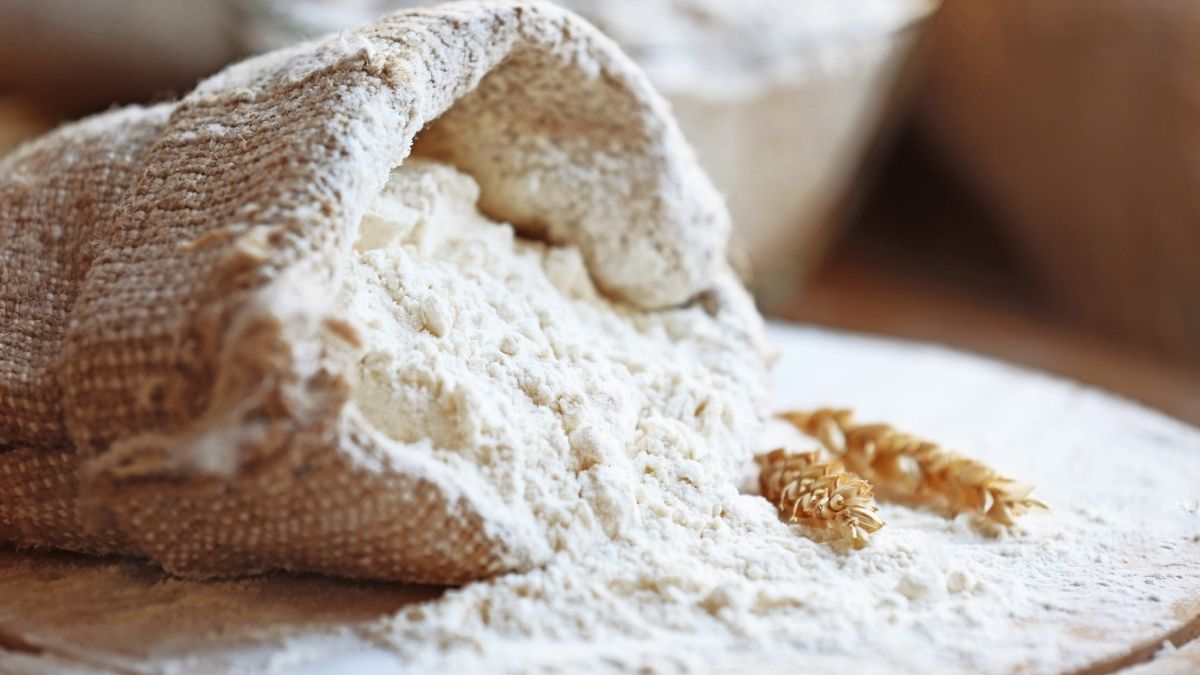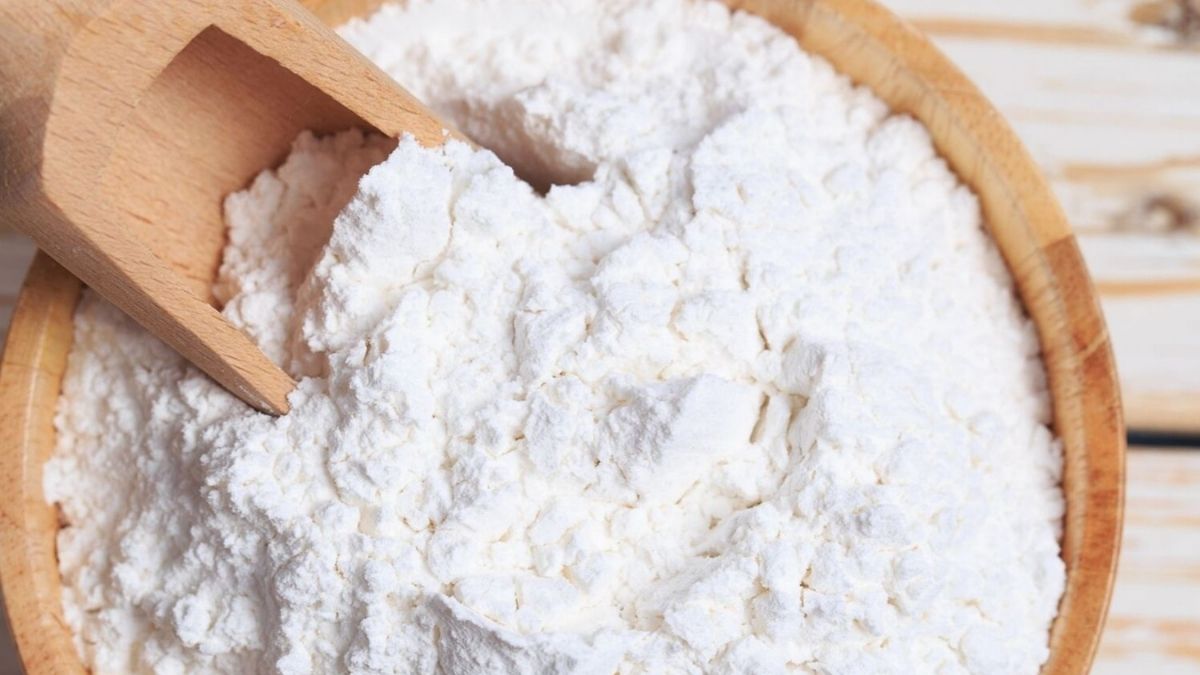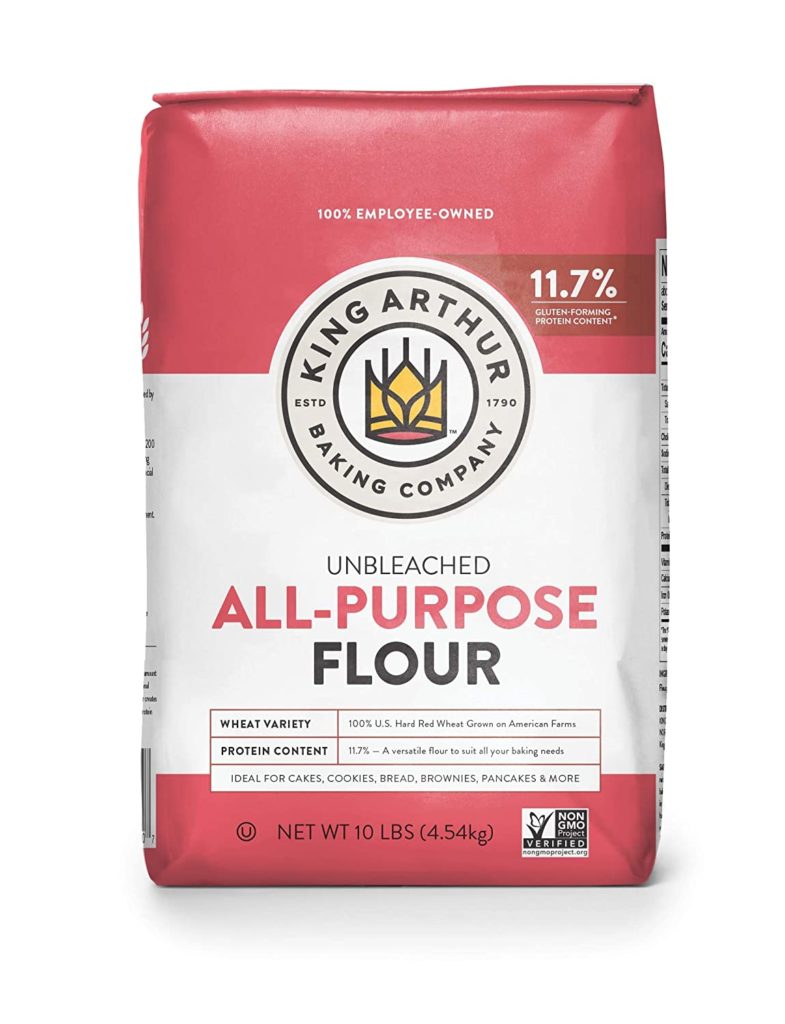The most often used flour is all-purpose flour, a medium-strength, medium-gluten flour that can make everything from pizza dough and crusty bread to pie crusts, cakes, cookies, and pancakes. All-purpose flour is flexible wheat flour that may be used in various recipes. Hard red wheat or a combination of hard and soft wheat (usually 80:20 ratio) is used to make it. As the name implies, all-purpose flour can make bread, biscuits, pizza, cookies, muffins, and other baked products. It’s also used to thicken sauces and gravies.
What is All-Purpose Flour?
To comprehend all-purpose flour, we must first discuss wheat flour in general. Different wheat strains have naturally higher protein levels than others, and the higher-protein varieties are referred to as “hard.” Kinds of wheat with a low protein content are described as “soft.” The hardest or highest-protein wheat is durum wheat, used to make pasta, and the softest wheat is soft white wheat.
Wheat is divided into six classes, each milled and sometimes combined with other kinds of wheat to produce flours of varied strengths. Strong flour is a gluten-rich, high-protein flour that can make pasta, pizza dough, crusty bread, and other baked goods. Weak flour is manufactured from soft wheat and has a low protein content, making it ideal for delicate pastries and cakes.
The industry developed all-purpose flour, a blend of strong and weak flours formulated to be appropriate for baking crusty bread and delicate pastries and cakes, to make it easier for home bakers to avoid having to buy store several strengths of flour. That doesn’t necessarily make it the best flour for those uses. However, it’s a good middle-of-the-road flour. Gluten content differentiates wheat flour, and all-purpose flour is typically approximately 12 percent gluten, give or take a percent, depending on the brand. Cake flour has a moisture content of 7.5 to 9%, while bread flour has 13 to 14%.
How to Cook with All-Purpose Flour?
All-purpose flour is mixed with leavening agents like yeast or baking powder and other ingredients like oil, eggs, sugar, and salt and baked in ovens or grills to make bread, cakes, and other baked goods. It can also be used to thicken soups and stews (typically in conjunction with some form of fat in a process known as a roux).
All-purpose flour must be measured correctly in baking, and the best way to do so is by weight. This is a more precise measurement method than volume (such as cups), ensuring that your recipes are exact. A “cup” of all-purpose flour is approximately 125 grammes, and this, too, will vary depending on the flour brand. King Arthur All-Purpose Flour, for example, weighs 120 grammes per cup.
By looking at the nutritional label on the flour bag, you can figure out the conversion. The serving size could be listed as 1/4 cup with 30 grammes in parenthesis. This particular brand of flour weights 120 grammes (30 times 4) per cup. In other words, if a recipe calls for 3 cups of flour, you’ll need 360 grammes.
Many recipes ask for weighted flour measurements. If this is the case, weigh the item, and no conversion will be necessary. This is especially useful if you’re following a recipe created by the flour manufacturer (which is not a bad idea).
What does it Taste Like?
All-purpose flour isn’t eaten on its own; the flavour of dishes made with it comes from the other components it’s combined with, such as yeast, sugar, salt, fats, and so on, as well as the caramelization of starches that occurs when the dough or batter is baked. When you taste the flour on its own, it tastes bland, dry, and powdery.
All-Purpose Flour Substitute
If you’re making a cake that must be soft and sensitive or a pizza dough that needs to be chewy and crusty, all-purpose flour might not be up to the task. Cake flour is used to make cakes and cookies, pastry flour is used to make pies, pastries, and cookies, and bread flour is used to make bread and pizza doughs. If you do this, use the same measurement as the recipe specifies; no conversion is necessary.
You could convert if the recipe calls for volume measurements, but this can be tricky because different strength flours have varied weights per cup. You may get better results if you try a different recipe.
All-Purpose Flour
How to Store All-Purpose Flour?
If the package is tightly wrapped, all-purpose can be stored in a cold, dry place, such as a pantry, for 6 to 8 months. If you live in a hot or humid climate, seal the unsealed flour bag in a large plastic bag and store it in the refrigerator. However, please keep it away from strong-smelling items like onions and other grains, as the flour absorbs scents quickly. You can even freeze it to extend the shelf life even further.
Insects, which can lay their eggs in the flour and then hatch, and rancidity, which is more concerned with whole-grain flours than all-purpose flour, are things to watch for.
What is the Difference Between Bleached All-Purpose Flour and Unbleached All-Purpose Flour?
Bleached all-purpose flour has a softer texture than unbleached flour. Unbleached all-purpose flour is the type we recommend since it provides greater structure in baked items and preserves more of the wheat’s character.
In general, bleached all-purpose flour employs bleaching agents to speed up the ageing process (typically benzoyl peroxide and chlorine gas, among others). This produces a whiter, finer-grained flour and has a softer texture. Some persons with sensitive palates can detect a difference in taste between foods manufactured with bleached and unbleached flour.
The bleaching procedure softens the flour, which affects the resultant baked goods’ texture and appearance. Compared to unbleached flour, foods made with bleached flour have a softer texture, more volume, and a brighter colour. Cookies, pie crusts, quick bread, muffins, and pancakes are best made with bleached flour.
Unbleached all-purpose flour, or flour in general, is milled flour that has been allowed to age naturally. It has a slightly off-white tint that fades with age and a denser grain than bleached flour. Our all-purpose white flour, also known as plain flour, is milled to a fine consistency and rich flavour from a blend of the highest quality soft wheat.
Unbleached flour also takes longer to make than bleached flour, resulting in a higher price. Unbleached flour gives greater structure to baked goods due to its thicker texture, making it a perfect base for pastry, cakes, shortbreads, sauces, and other delectable sweet and savoury treats.
We don’t advocate mixing bleached and unbleached all-purpose flour in the same recipe. Unbleached flour, which takes longer to make, ages naturally, whereas chemical agents accelerate bleached flour. The ultimate result is two types of flour: one with a bright white hue and fine grain (bleached flour) and one with a pale and off-white colour, and a heavier grain (unbleached flour) (unbleached flour). Each flour causes subtle variances in baked items due to its varying textures.
Is Plain Flour and All-Purpose Flour the Same Thing?
All-purpose flour and plain flour are different names for the same product. In the United Kingdom, plain flour is widely used, whereas, in the United States, all-purpose flour is widely utilized. Because they are milled from different wheat varieties, UK plain flour is less suitable for creating bread. There is no rising agent in either of these flours. Plain flour is formed by grinding wheat or rye grains into a powdery material. Bread, cakes, pastries, and other baked items are made using it. The flavour of this flour is unremarkable (hence its name).
What is the Nutritional Value of All-Purpose Flour?
The wheat’s bran and germ are removed to make all-purpose flour or simple flour. Wheat bran includes 76% of the vitamins and minerals found in wheat, and the nutritional value of the residual product is negligible once the bran is removed. Whole wheat flour, made from the brown outer layer of wheat known as bran, is healthier than ordinary flour because it includes more dietary fibre. You can bake with flours such as Cotswold Stoneground Light Spelt Flour, Stoneground Strong Wholemeal Flour, or Organic Stoneground Dark Rye Flour if you want extra vitamins and nutrition.
All-Purpose Flour Calories
According to the nutrition labels, a single cup of flour has roughly 455 calories. Although it may be a large number, you are unlikely to ingest many calories because fewer calories are consumed when flour is mixed with liquids and other components to form food or bread.
Conclusion
All-purpose flour can be used for various tasks, including baking, cooking, coating meats and vegetables, and thickening sauces and gravies. To manufacture all-purpose flour, a blend of hard wheat (which has more gluten) and soft wheat is ground together. Because it includes a moderate amount of protein, all-purpose flour is adaptable. Gluten is generated in proportion to the amount of protein in the wheat. Gluten gives the dough flexibility, allowing it to stretch and trap gases produced by leavening agents like yeast and baking powder. The dough will rise naturally, resulting in delicious-looking and tasting baked items.



